Submitted by Megha Balooni
"Good architecture is a slow process", interview with Ar. Sandeep Bogadhi
India Architecture News - Jan 17, 2021 - 20:36 7765 views
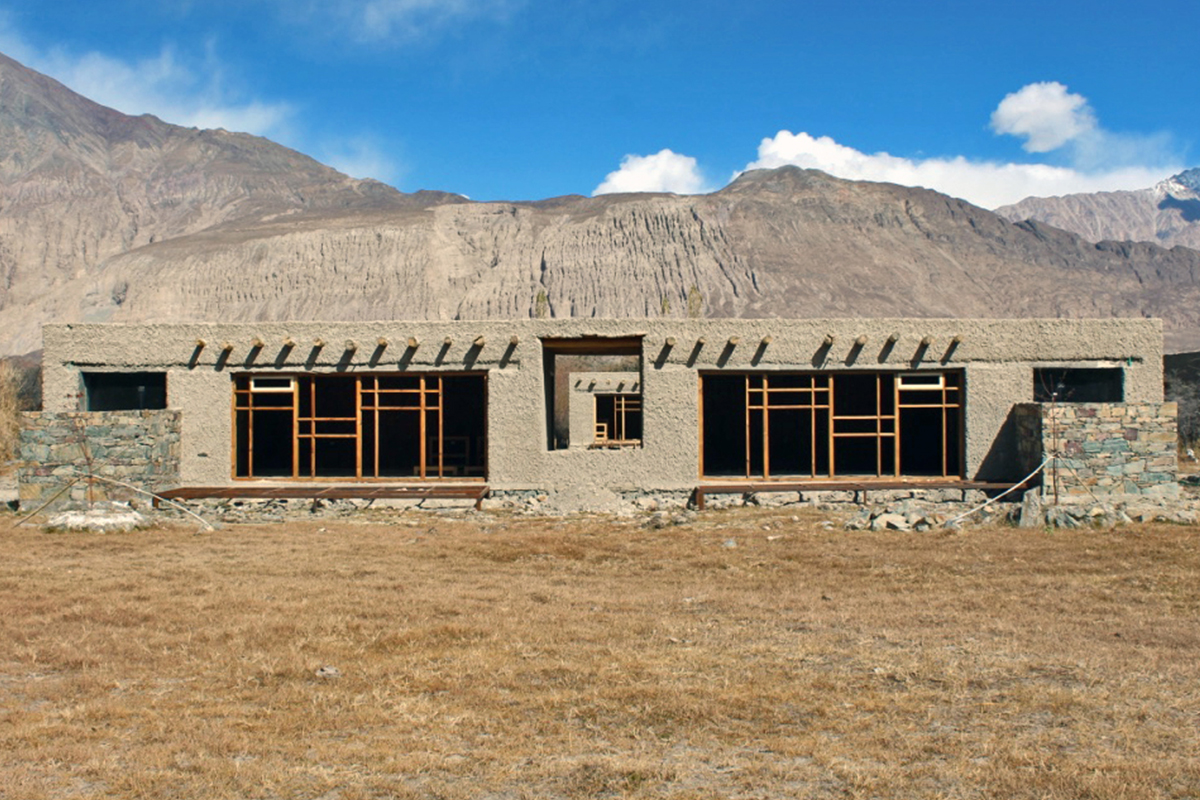
In continuation to the previous article Significance Of Materiality In Architecture, this series of interviews seeks to push the conversations surrounding materiality and its influence to shape the vision and final design of projects, regardless of its scale and scope. The series began with German architect Anna Heringer and our next architect, Sandeep Bogadhi emphasises that good architecture is a slow process; good architecture is slow design.
Megha Balooni: Thank you for doing this interview with us. Could you walk us through the various stages of your design processes – concept, design, construction and completion?
Sandeep Bogadhi: “Design” is overstated. There is too much emphasis on design and design processes in present times. Architecture is a volumetric science within its immediate ecology. So, for every project we do, the exercise is to build something that perfectly sits in a landscape giving it a sculptural dimension.
The concept for any of my projects is not defined by the brief or program but rather the context, materials that the immediate surroundings offer, and contemplating what are the possibilities. Additionally, we also look out for the kind of artisans present in the area, etc. These questions really become the foundations to the evolution of a design for me.
For every project, we make 1:1 scale mock-up walls with the materials available on site. These mock-ups give us a real time look and feel of the materials as well as the skillset of the artisans at work. This also helps in giving an opportunity to go back to our studio and rework our designs depending on what the materials tell us from the mock-ups.

Mock-up walls in rammed earth (Earthling Ladakh) Image © Earthling Ladakh
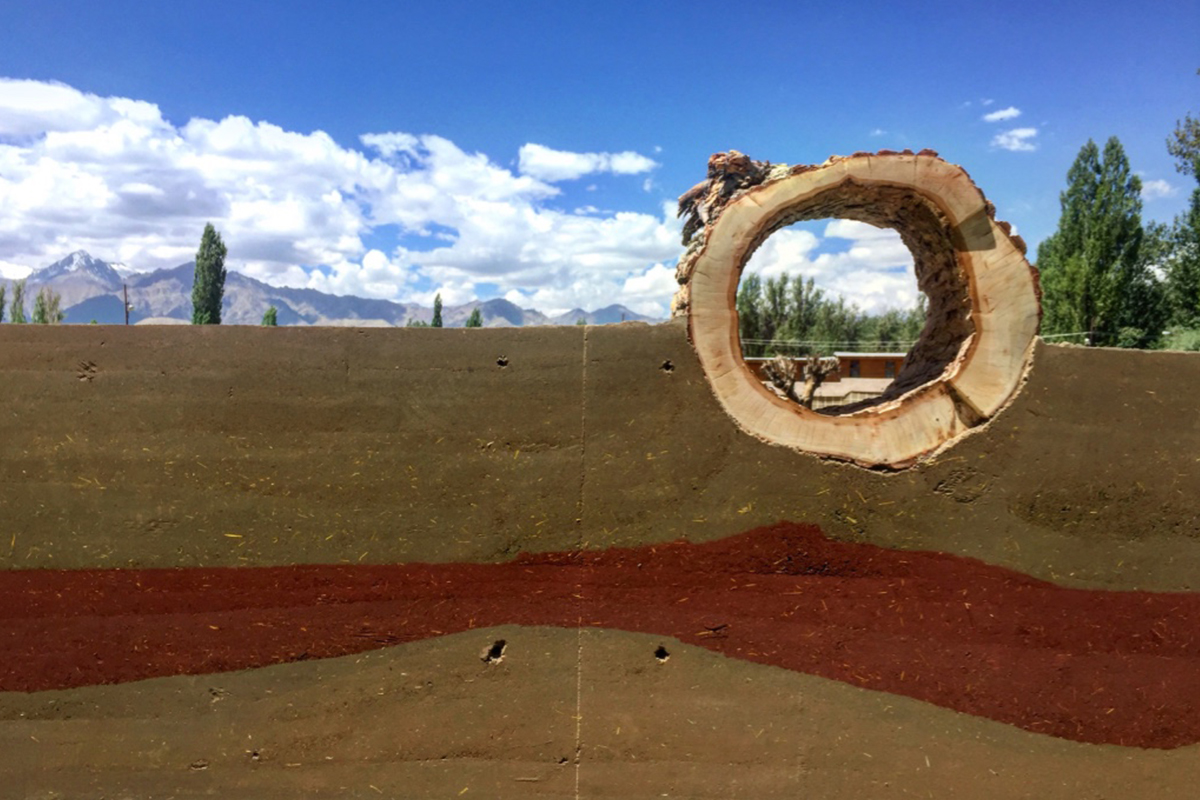
Material details on a mock-up wall(Earthling Ladakh). Image © Earthling Ladakh
Megha Balooni: Even though sustainable design and architecture has caught attention and fancy of designers and architects world over, what do you feel are some common mistakes and or overlooked parameters that one commits when starting out?
Sandeep Bogadhi: Architecture alone cannot make the planet sustainable. Sustainability does not simply come from a building but is rather, a lifestyle.
The most common mistake is understanding your client – who are you building for? Architects cannot (and should not) build an eco-friendly/sustainable house for a client who has four cars in their garage. Having said that, if one understands the value of having a conscious living which is in sync and balance with the ecosphere (flora and fauna), sustainable design is for everyone ready to adapt/re-adapt to a responsible lifestyle.
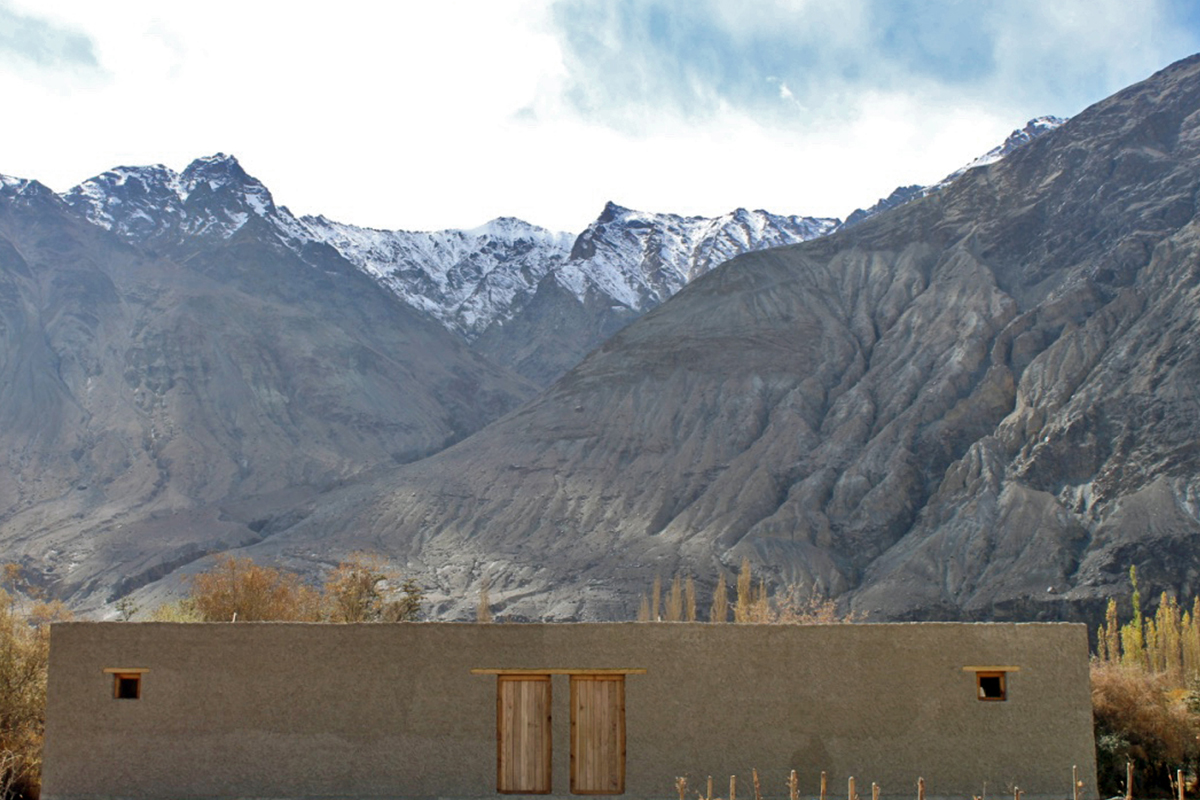
The Creek, Diskit, Nubra Valley, Ladakh (Earthling Ladakh). Image © Earthling Ladakh
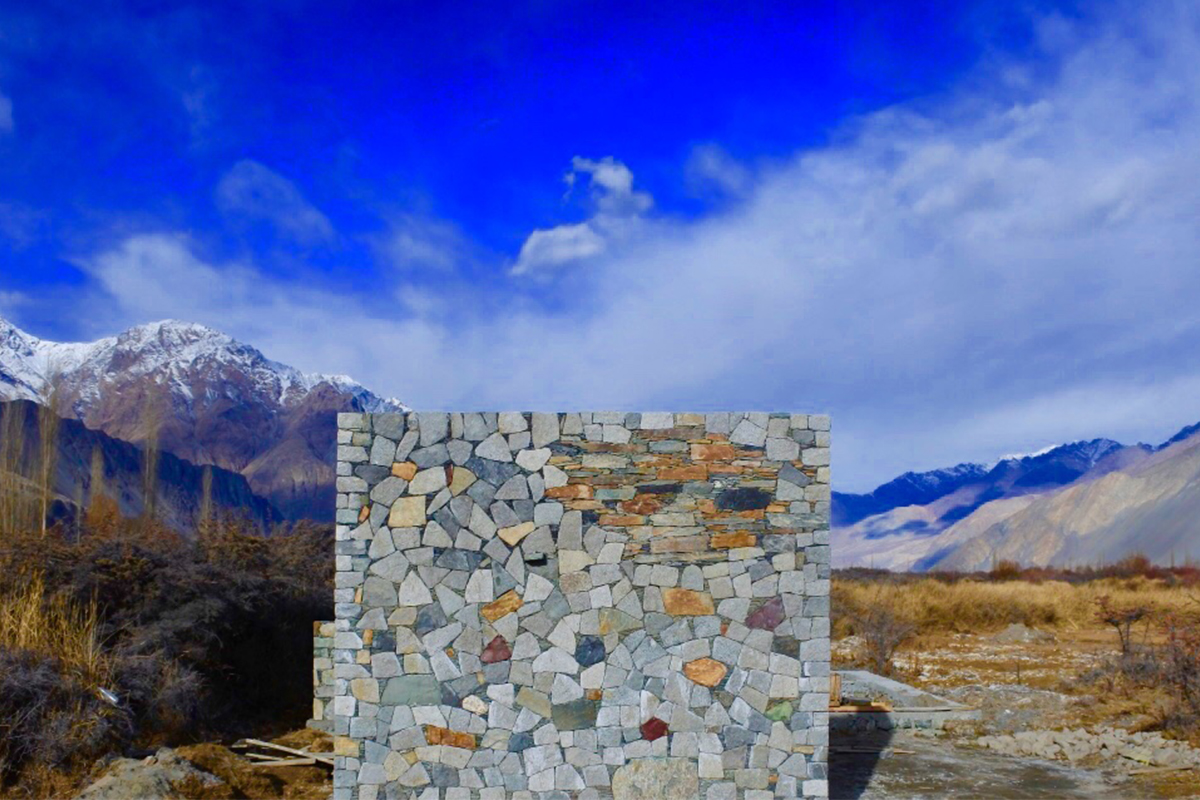
Object in the landscape (Earthling Ladakh). Image © Earthling Ladakh
Megha Balooni: Material knowledge and selection are some of the important aspects of vernacular design. How has learning the local practices of construction helped you in understanding architectural intricacies?
Sandeep Bogadhi: Material is everything in architecture be it vernacular or contemporary. Time is the only parameter to judge good architecture. Natural materials tend to age beautifully with time. Therefore, I think that if one wants to create timeless architecture, one needs natural materials in their raw form. Rest will perish in time.
The beauty of vernacular design lies in its simplicity. In the context of Ladakh, with harsh and unforgiving landscape, the vernacular designs evolved from the resources available coupled with people’s pastoral lifestyle. The old buildings in Ladakh are a source of knowledge to understand designs of overhangs, spanning spaces, waterproofing of roofs etc. The material palette is still the same for me as used locally- earth, stone and wood.
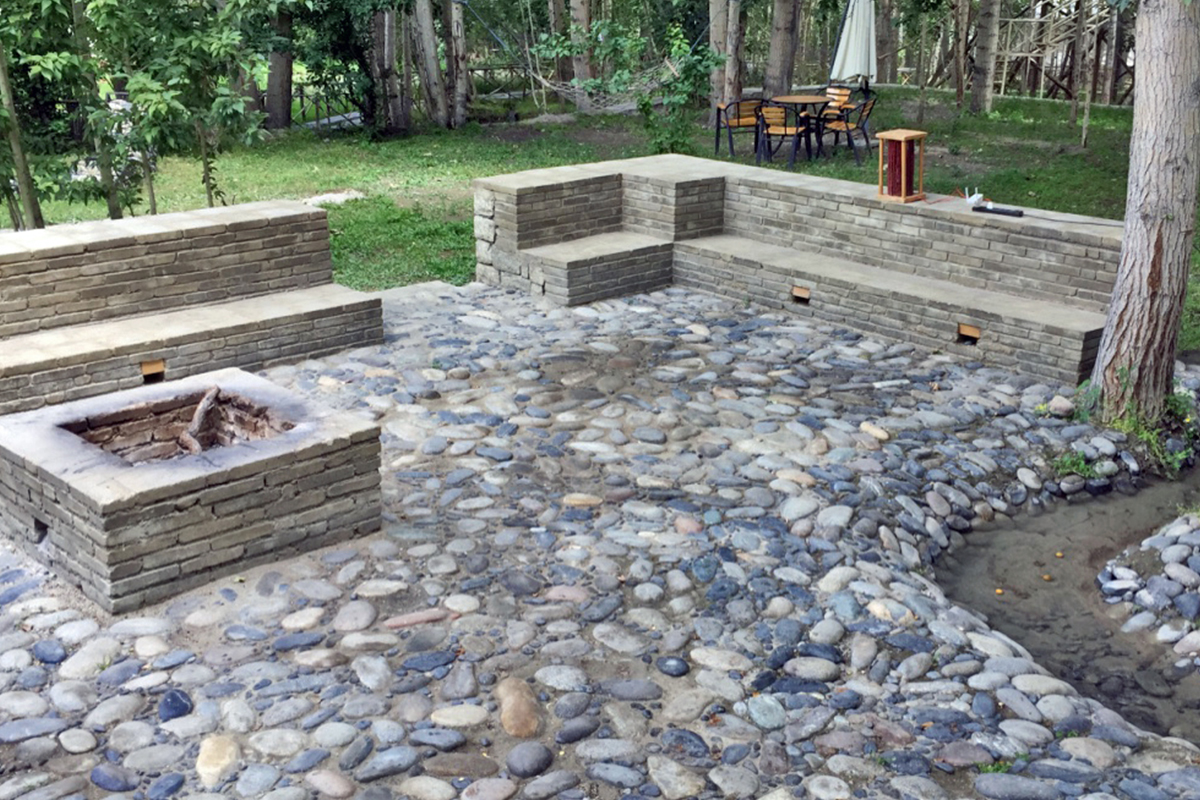
Test of natural materials in extreme weathers of Ladakh; project: Organic retreat, Nubra Valley (Earthling Ladakh). Image © Earthling Ladakh
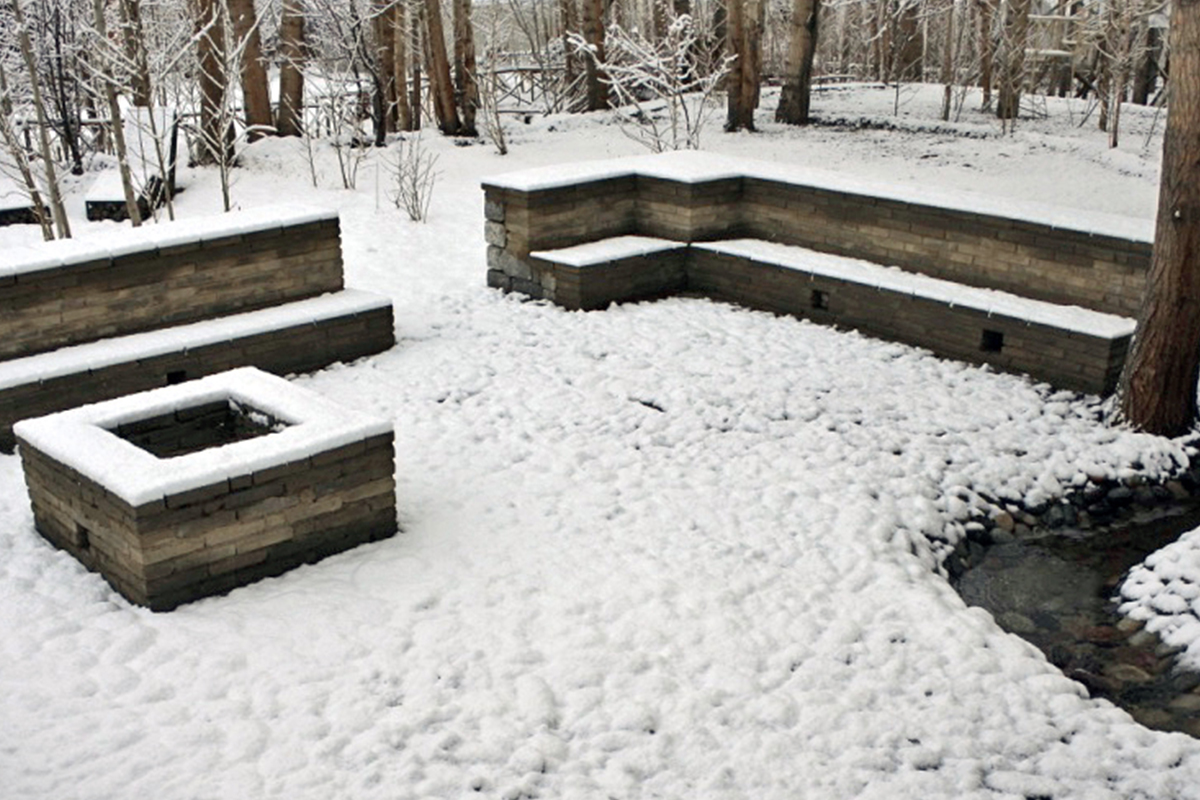
Test of natural materials in extreme weathers of Ladakh; project: Organic retreat, Nubra Valley (Earthling Ladakh). Image © Earthling Ladakh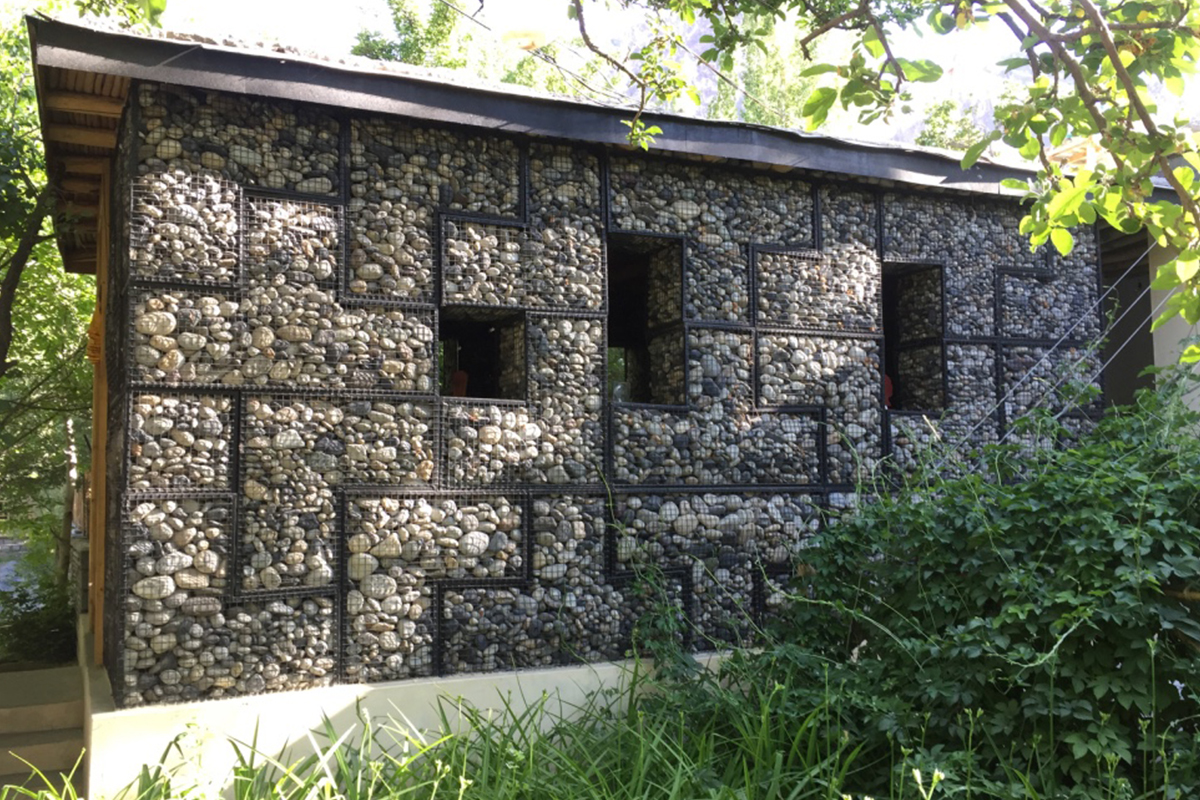
Test of natural materials in extreme weathers of Ladakh; project: Organic retreat, Nubra Valley (Earthling Ladakh). Image © Earthling Ladakh
Megha Balooni: What are some of the social practices you seek to bring about a change in, through your practice’s philosophy, if any? Are there any examples to share?
Sandeep Bogadhi: Every site/context has the resource and ability to evolve into a timeless architecture. I try to bring about a change in perception of people that locally available materials can be beautiful with modern sensibilities. When I have started using redundant stones and pebbles in Nubra Valley for my projects, people followed it and started using the same in their own buildings instead of buying materials that are transported from a thousand mile. Same was the case with earth construction. With good design tools and craftsmanship, earth buildings can be more beautiful and timeless as opposed to the common misconception of associating earthen buildings with the poor.
All our projects follow the same vernacular principles. Use of stone, earth and wood. But with deep thinking, we try to bring the true potential of these same materials which look like sculptures in the barren landscapes of Ladakh.
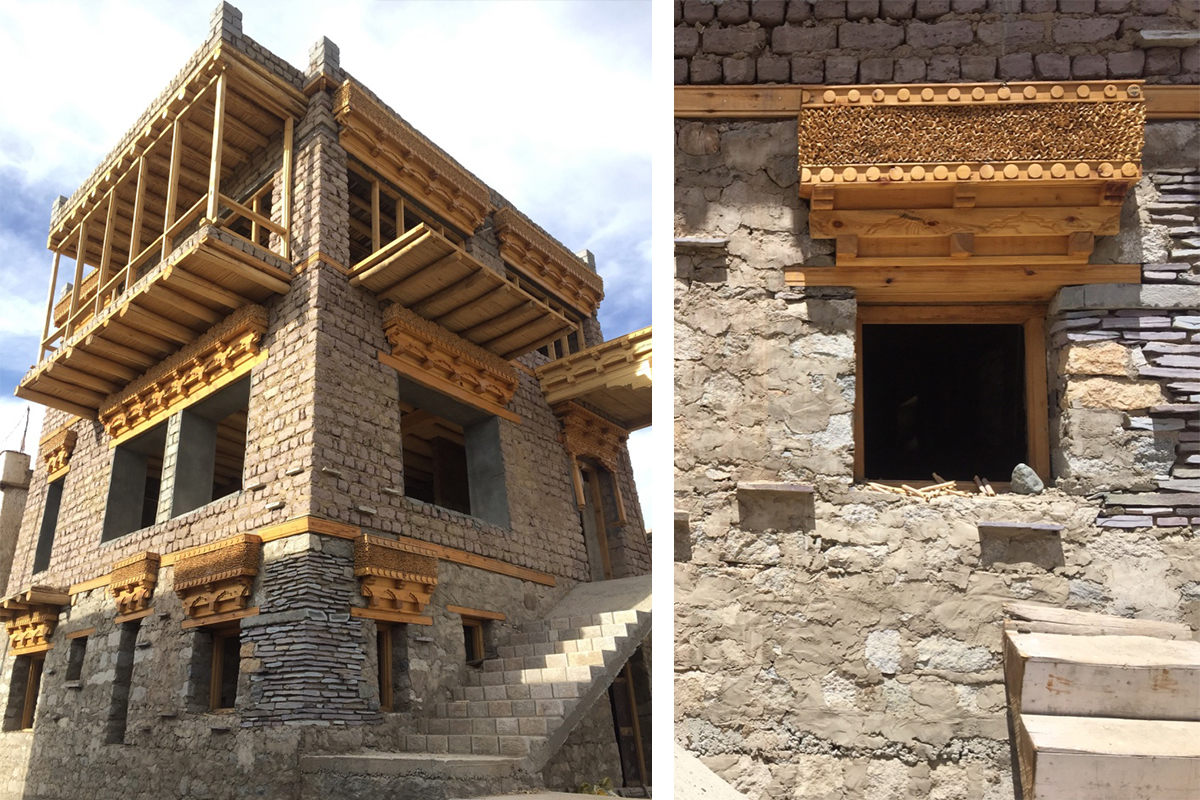
Namra House, Ladakh (Earthling Ladakh). Image © Earthling Ladakh
Megha Balooni: What are your thoughts on combining modern construction methodologies with vernacular practices for design? Could you discuss any instance where you have used such a collaboration?
Sandeep Bogadhi: Fusing old with the new gives a varied design palette and I think that the way forward. There is a lot of wisdom in vernacular design which architects need to learn so that one doesn’t have to invent the wheel over and over again. But then we can also combine them with modern sensibilities to make it relevant to our times and well-prepared for the future. Modern construction methods are generic and not context specific. ‘Craft’ and ‘material’ are the only components which have permanence in architecture. Modern construction methods tend to save time and make the process fast, which is considered efficient. I disagree. Good architecture is a slow process; good architecture is a slow design. Slow enough to evolve through material, through craft and transcend through time.
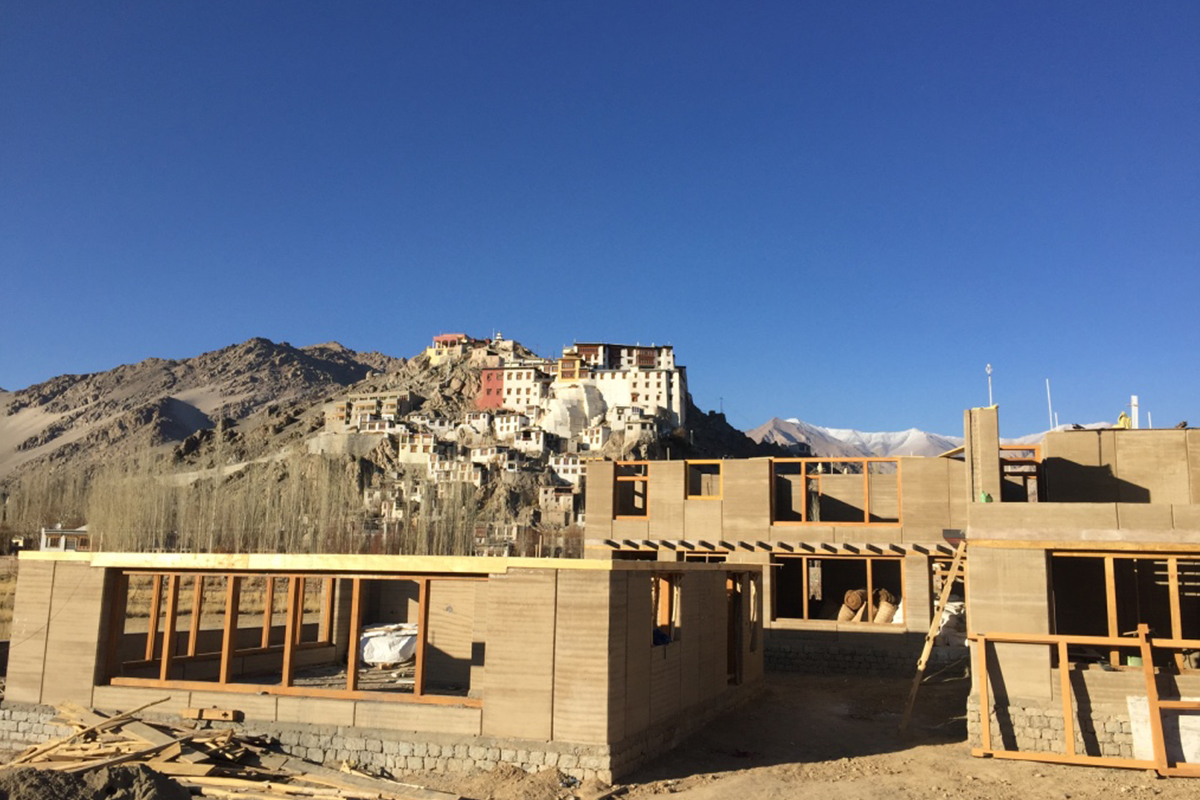
Ongoing construction of Spituk House with Spituk Gompa in the background (Earthling Ladakh). Image © Earthling Ladakh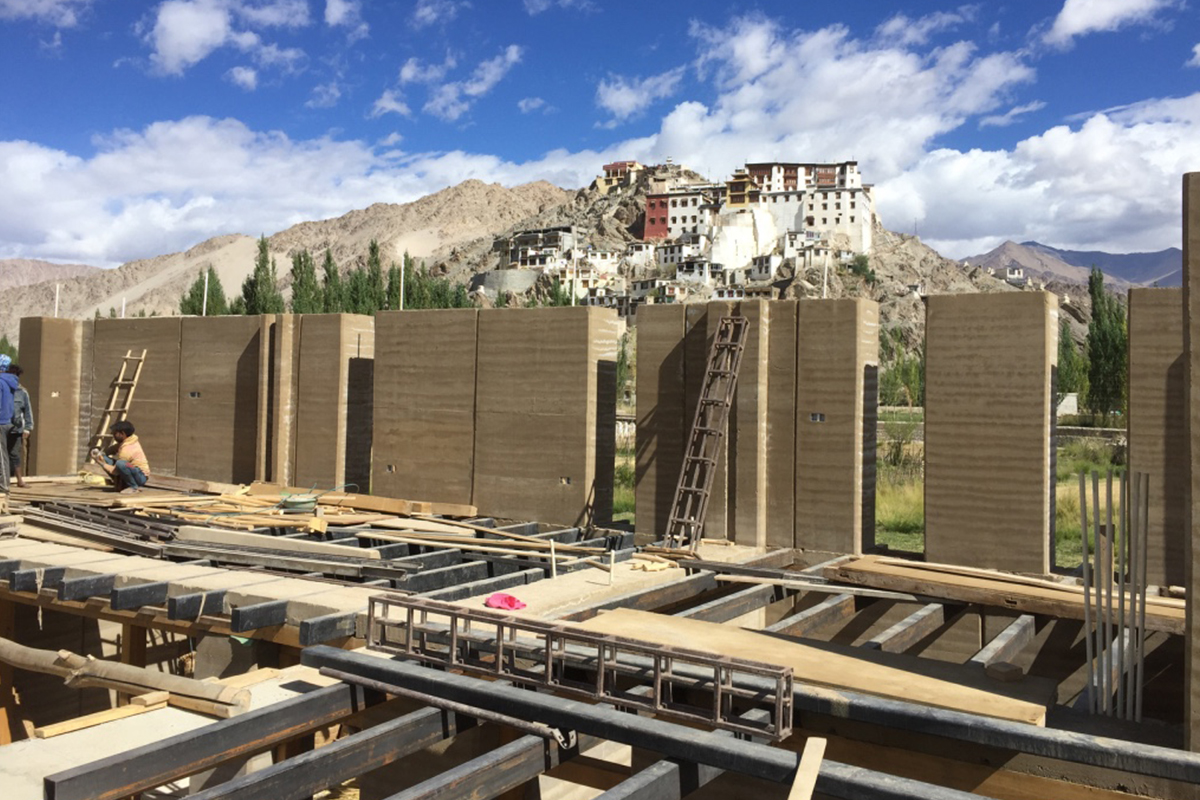
Ongoing construction of Spituk House with Spituk Gompa in the background (Earthling Ladakh). Image © Earthling Ladakh
Megha Balooni: What are some of the preparedness you underwent before starting out with vernacular construction? What can be some effective strategies and tools (soft skills) that architects should possess, as opposed to a contemporary design practice?
Sandeep Bogadhi: I employ vernacular principles which are low-tech and techniques which a layman can adapt to. But with truthful approach and appropriate construction methods, we create a timeless architecture by exposing the true potential and beauty of these humble materials like earth, stone and wood. Architecture outlives our lifetime. And if built with true integrity, a building can stand a thousand years. I think that is what architects should aim for- creating timeless architecture which can withstand the test of time and be relevant through all ages. Contemporary practices are using design as problem-solving exercises. They put too much stress on the functions and program, both of which are not permanent. They change over time.

The Creek, Diskit, Ladakh – completely built with redundant materials (Earthling Ladakh). Image © Earthling Ladakh
Megha Balooni: What are some methods you use to bring distinction to your projects which might be located in a similar terrain?
Sandeep Bogadhi: Every site is distinct. Every village is distinct in its resources. Just by employing local materials can distinguish each project. Using the power of design and craftsmanship, we are able to achieve aesthetic structures which are healthier, cost-effective in their reusability, ecologically sensitive and fit perfectly in their context.
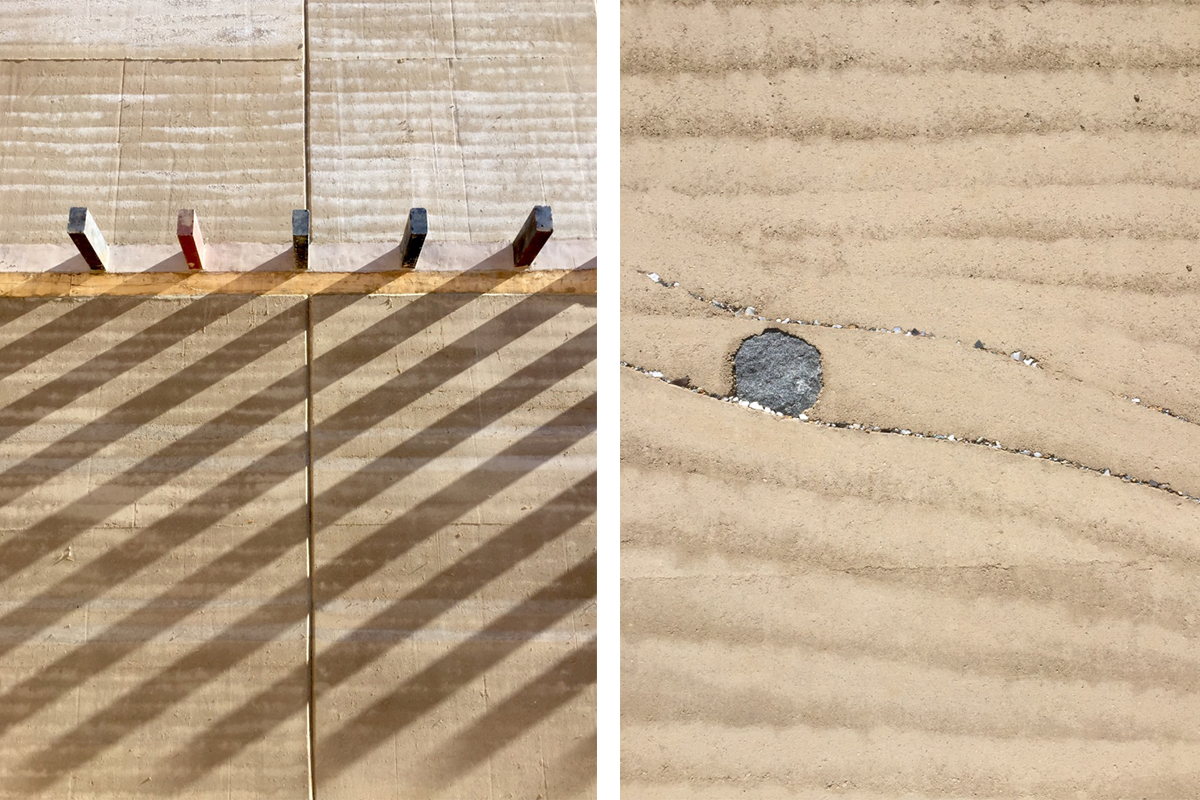
Rammed earth details (Earthling Ladakh). Image © Earthling Ladakh

Stone wall details (Earthling Ladakh). Image © Earthling Ladakh
Megha Balooni: Is there a project you could share with us where the materials used outdid the original vision you had for the project?
Sandeep Bogadhi: The vision and first principles of design are always intact. But when you use natural materials like stone, it is impossible to render a visual of the final product since each stone is different. Working with natural materials is very humbling and the material itself determines what it can be with a conscious design. To be honest, these humble materials outdo every one of my projects and am happy about that.
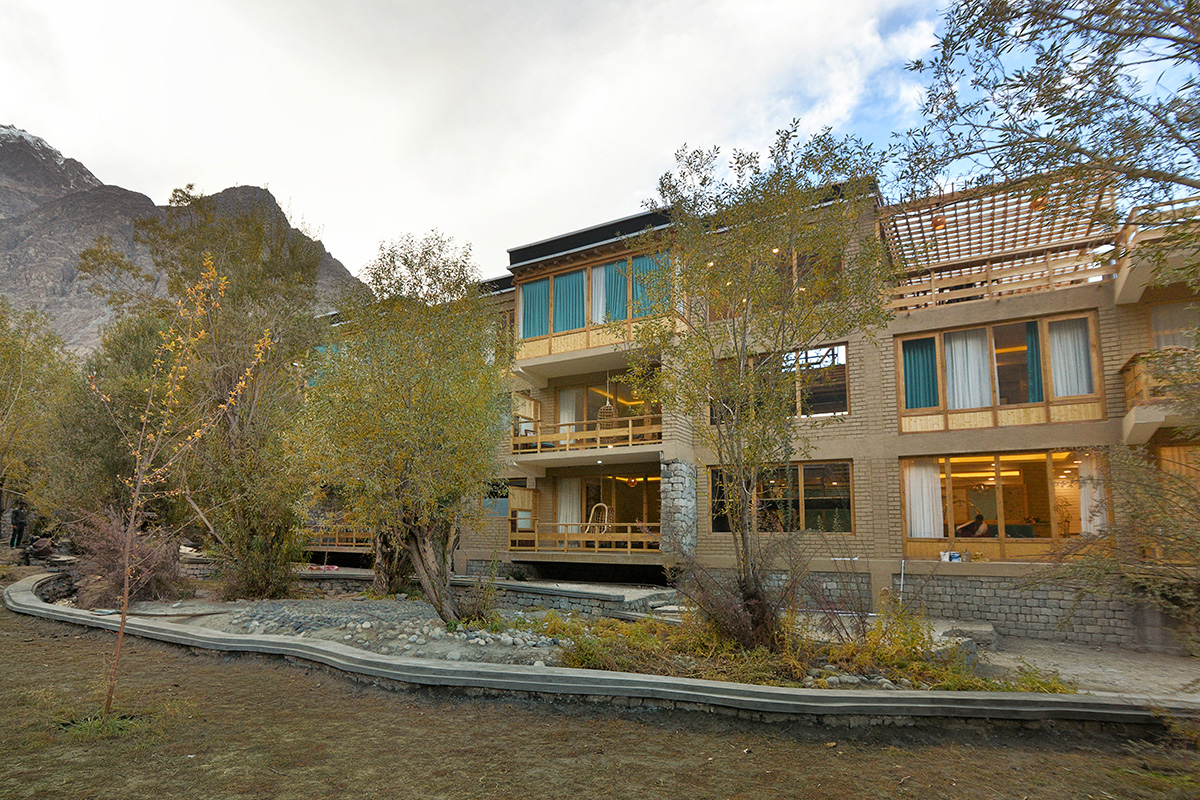
Namra House, Ladakh (Earthling Ladakh). Image © Earthling Ladakh
Namra House, Ladakh (Earthling Ladakh). Image © Earthling Ladakh
Earthling Ladakh is a design build practice based out of Nubra Valley in Ladakh, with extreme weather conditions and remote in terms of accessibility. Helmed by Ar. Sandeep Bogadhi, the practice is based on the premise that every context/project has the potential and material resource to evolve on its own to give itself a regional identity and aesthetic with the power of design and craftsmanship. Earthling was found with the aspiration of mainstreaming natural materials and earthen architecture with refined craft.
Head Image: The Creek, Diskit, Nubra Valley, Ladakh (© Earthling Ladakh)
